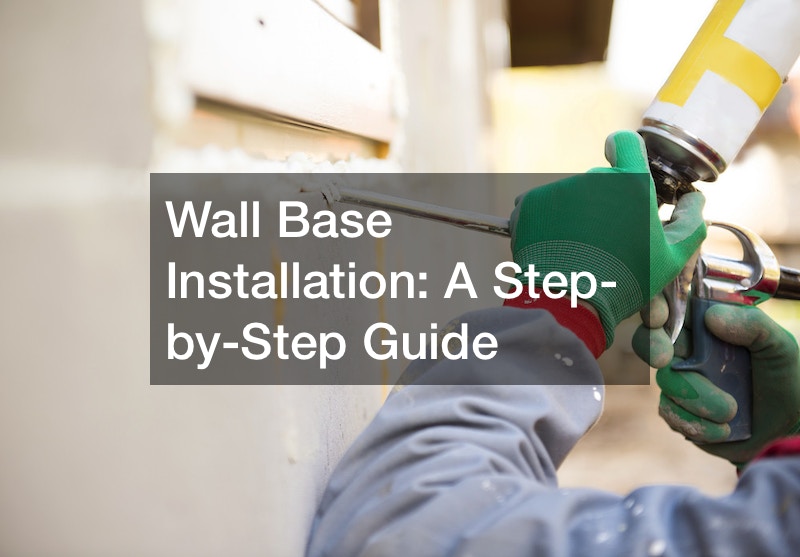Wall bases, commonly known as cove bases, play a dual role by contributing to both the visual appeal of a space and its practicality, particularly in facilitating cleaning routines.
1. Preliminary Steps:
Initiate the project by clearing the designated space, relocating furniture to the center for unobstructed access. Use caution when removing the existing wall base, especially if it has been painted over, employing a razor knife to prevent damage to the underlying wall surface.
2. Adhesive Selection:
Choose an appropriate adhesive for securing the new cove base. Opting for a specialized base bond adhesive ensures a durable bond while preserving the required flexibility.
3. Methodical Installation:
Apply the adhesive generously along the back of the new cove base. Precision is key; use gloves to smoothen imperfections and ensure a seamless, professional finish.
4. Addressing Corners:
Corners pose a specific challenge in the installation process. Navigate this by utilizing a razor knife with care, allowing for a meticulous transition around corners.
5. Managing Excess Adhesive:
Timely removal of excess adhesive is crucial during installation. Alternatively, trim excess dry adhesive as it possesses elasticity even after drying.
6. Outside Corners and Turns:
For outside corners or rounded turns, the material can be scored and trimmed to achieve a precise fit, contributing to a polished end result.
7. Appreciating the Transformation:
Step back to observe and appreciate the revitalized space. The updated wall base not only enhances the aesthetic appeal but also simplifies future cleaning endeavors.
Happy remodeling!
.
Wall bases, commonly known as cove bases, play a dual role by contributing to both the visual appeal of a space and its practicality, particularly in facilitating cleaning routines.
1. Preliminary Steps:
Initiate the project by clearing the designated space, relocating furniture to the center for unobstructed access. Use caution when removing the existing wall base, especially if it has been painted over, employing a razor knife to prevent damage to the underlying wall surface.
2. Adhesive Selection:
Choose an appropriate adhesive for securing the new cove base. Opting for a specialized base bond adhesive ensures a durable bond while preserving the required flexibility.
3. Methodical Installation:
Apply the adhesive generously along the back of the new cove base. Precision is key; use gloves to smoothen imperfections and ensure a seamless, professional finish.
4. Addressing Corners:
Corners pose a specific challenge in the installation process. Navigate this by utilizing a razor knife with care, allowing for a meticulous transition around corners.
5. Managing Excess Adhesive:
Timely removal of excess adhesive is crucial during installation. Alternatively, trim excess dry adhesive as it possesses elasticity even after drying.
6. Outside Corners and Turns:
For outside corners or rounded turns, the material can be scored and trimmed to achieve a precise fit, contributing to a polished end result.
7. Appreciating the Transformation:
Step back to observe and appreciate the revitalized space. The updated wall base not only enhances the aesthetic appeal but also simplifies future cleaning endeavors.
Happy remodeling!
.

